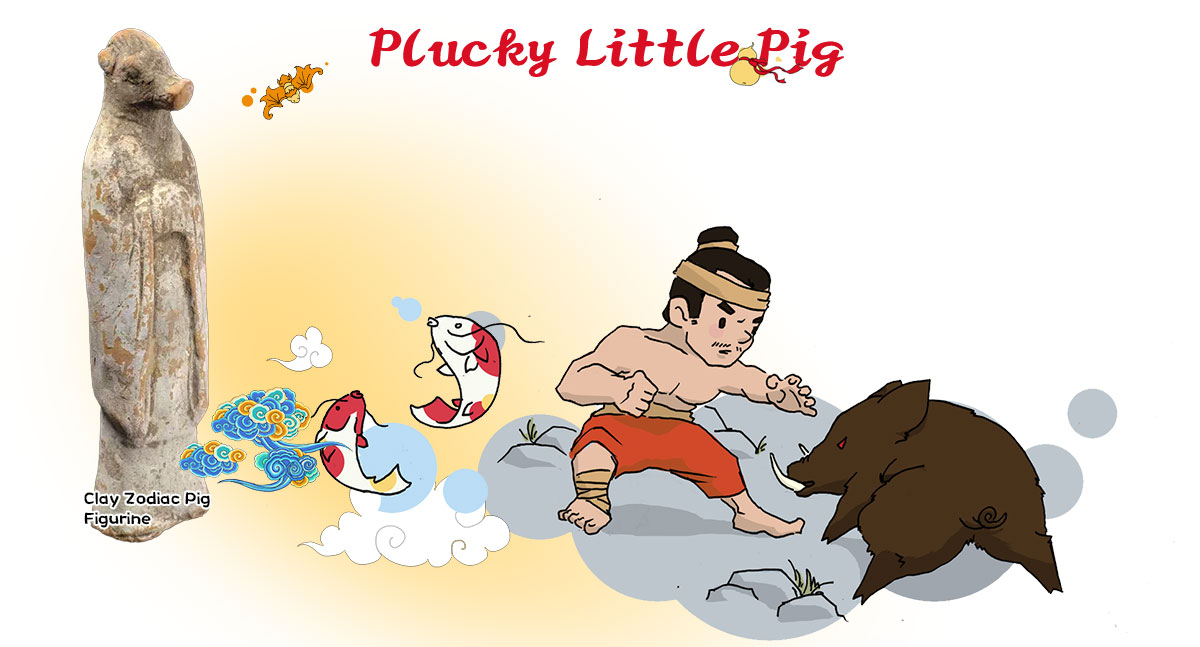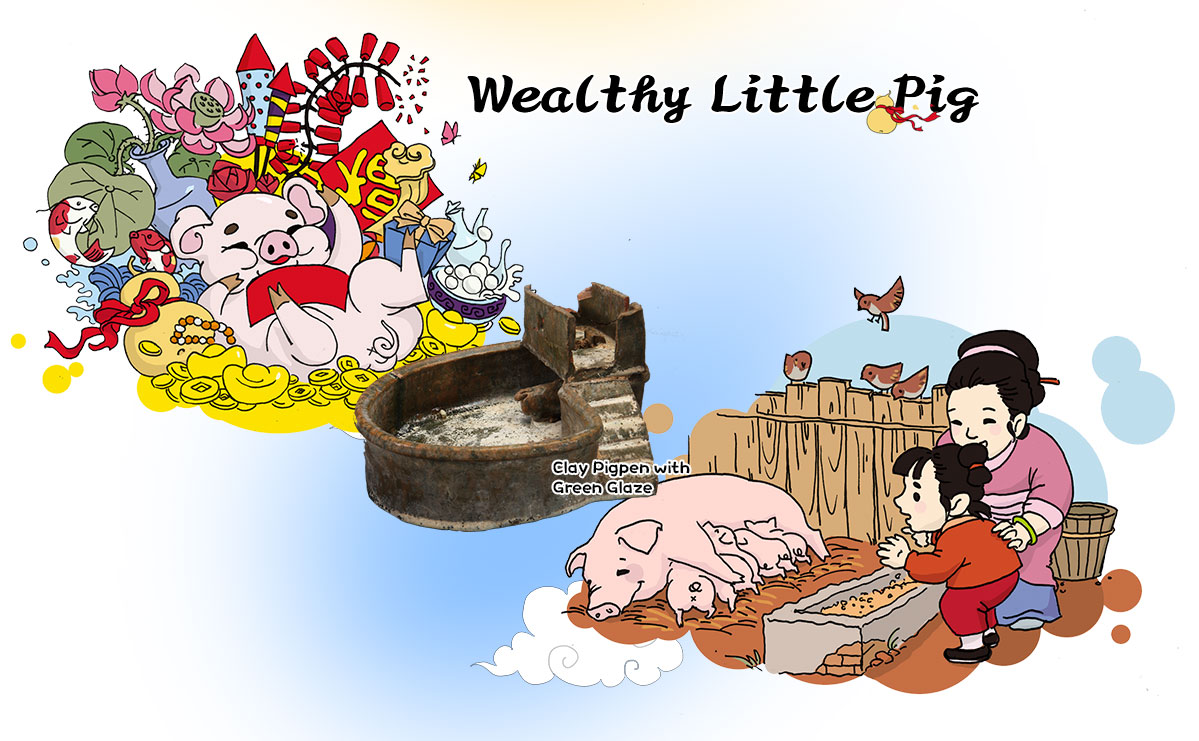When you think of pigs, what comes to mind? Perhaps the adorable Peppa Pig, or the comical, good-natured Pigsy from Journey to the West (Zhu Bajie)? In fact, many characters in literature and art are inspired by the image of the pig. Did you know? In ancient China, pigs played various roles in people’s lives: they were symbols of bravery in battle, the big pig trotters were tokens of good fortune for those who wished to succeed in the imperial examinations, and they even shared the same surname as emperors of the Ming dynasty (1368-1644)—at one point, they nearly disappeared from the dining table because of this noble connection. Why? Let’s explore these fascinating stories.
As early as the Palaeolithic era, pigs became part of human life. People hunted wild boar, which were fierce and formidable—so much so that even tigers approached them with caution. Thus, wild boars were seen as symbols of courage. In ancient oracle bone script, the character for "bravery" (敢) is composed of symbols representing "hand"(手) and "wild boar"(亥:野猪), as catching a wild boar bare-handed was considered the ultimate show of courage. Wang Mang (r. 9–23) named his troops the “Ferocious Boar Troops” in the hopes that they would charge forward like wild boars, unstoppable and fierce. In a similar spirit, the Manchu people, who valued bravery, considered wild boars one of their protective deities.
By the Neolithic period, wild boars had been successfully domesticated, and the number of pigs one owned became a measure of wealth. Pigs became synonymous with fortune, earning a reputation as “black gold”. The poet Du Fu wrote, “‘Black gold’ is raised in every household, yellow croaker is enjoyed in every meal,” capturing an image of a prosperous life.
For ancient Chinese people, who deeply valued the afterlife, wealth remained important even after death. Graves were often furnished with offerings of whole pigs, pig heads, or pig jawbones. During the Han dynasty (202 BCE –220 CE), jade pigs, clay pigs, and even clay pig pens were placed in tombs, not only to reflect the wealth of the deceased but also in the hope that they would continue to enjoy abundance in the next world.
Today, pigs are often thought of as dim-witted, dirty, and smelly. But in ancient times, pigs were considered symbols of good fortune. Their round, plump forms represented luck, prosperity, and completeness.
For example, in the Tang dynasty (618–907 CE), pigs became a lucky charm for students hoping to succeed in the imperial examinations. Since the words “pig” (猪) and “vermilion” (朱) sound similar, as do “trotter” (蹄) and “mark” (题), students’ families would gift them braised pig trotters as a good-luck charm for the exams, hoping their names would be “marked in vermilion”. This custom later evolved into the tradition of gifting ham during the Chinese New Year. In places like Tianjin and Hebei, people see the “fat pig nuzzling up against the door” as an omen of wealth and prosperity entering the home. Thus, during the Chinese New Year, households decorate windows with paper cuts with this blessing. Also, elders often say the coming Year of the Pig will be an abundant year, signifying bumper harvests and thriving livestock.
During the Ming dynasty (1368–1644), the eccentric and fun-loving Emperor Zhengde (Zhu Houzhao, r. 1505–1521) issued a funny order: a ban on the slaughter of pigs. As it turns out, the emperor’s surname was Zhu (朱), which means “vermilion”, but also sounds like the word for “pig” (猪), and he was also born in the Year of the Pig. This superstitious emperor, linking his surname and zodiac animal to pigs on the dining table, felt uneasy seeing people slaughtering pigs and eating pork each day. He, therefore, issued an edict declaring the eating of pork a sign of disrespect toward the emperor, banning pig farming, slaughter, and consumption altogether. Violators faced exile to the frontier—a punishment second only to execution in severity. The ban caused widespread anxiety.
As Emperor Zhengde journeyed south from Beijing to Yangzhou, villagers in Hebei and Shandong, fearing punishment, hurriedly butchered their pigs, sold the meat at discount prices, and buried any remaining piglets. Soon, not only was pork unavailable, but traditional offerings lacked the customary pig heads on the altar.



